Saudi Ministry of Culture Introduces World’s First VR History Tours in Metaverse
Saudi Arabia has made a major advancement in the expression and engagement of culture. It has introduced a wide range of immersive metaverse experiences and heritage attractions. The world’s first National Cultural Metaverse platform, which offers virtual reality (VR) history tours and other experiences, has been launched, according to the Saudi Ministry of Culture. The introduction of immersive virtual reality tours of its historical sites within the metaverse is a step forward in terms of accessibility and cultural preservation. The artificial intelligence system for Generative Media Intelligence (GMI) technology, which promises to transform cultural engagement on a global scale, supports national initiatives in the realm of the metaverse.
The World’s First VR History Tours
The Saudi Heritage Metaverse Platform, which is represented by droppGroup and its World’s First “Phygital” Metaverse droppPhygital, are partnering to launch the initiative utilizing Hyperledger Fabric 2.5 blockchain technology. The innovative platform offers users a dynamic realm where they can immerse themselves in a plethora of activities and attractions, mirroring real-life celebrations, such as the Kingdom’s Founding Day festivities, by seamlessly fusing cultural richness with digital innovation. The platform offers a wide range of activities to suit a variety of interests, including engaging History Marches and sections honoring music, art, history, culinary arts, and crafts.
VR tours powered by Generative Media Intelligence (GMI) technology
As part of the celebration of the Kingdom’s Founding Day, which was observed on February 22, the platform hosts a dynamic digital environment. It allows users to experience numerous activities and attractions “in real life.” It offers a variety of cultural shows, performances, and digital innovations powered by GMI technology. Additionally, users can anticipate having a virtual front-row seat to events that are streamed. These include the Saudi Founding Day Symphony Concert and cultural attractions like the History Walk. Additionally, mini-video games are available on the platform. It is available to users in the UK and around the world, for extra entertainment.
Read More: MGID Introduces New AI-Powered Dashboard for Campaign Setup
Fully immersive web-based experience
The Metaverse platform by the Ministry of Culture is a fully immersive, web-based experience that is compatible with Mobile XR. It guarantees accessibility on a variety of devices, including desktop computers, VR headsets, mobile phones, and other digital devices. To represent the Ministry of Culture’s dedication to inclusivity, users are ensured a smooth transition into the Metaverse. Moreover, it allows a wide range of international viewers to delve into and engage with the rich legacy of Saudi culture.
The National Culture Metaverse Platform’s launch is a significant turning point. It will provide users with virtual reality history tours and a variety of other immersive experiences. Through their exploration and engagement in metaverse events, users usher in a new era of cultural expression and participation. This project demonstrates the vitality of Saudi culture and establishes a standard for future cross-cultural exchange worldwide.
Importance Enhancement for cultural expansion
This project marks a significant advancement in the future of cultural expression and participation. It allows millions of people from the Kingdom and around the globe to experience Saudi events in the Metaverse. This marks a turning point in cultural participation. Saudi Arabia hopes to ensure that its legacy endures even as physical structures deteriorate or change over time. It preserves these sites’ histories and significance for future generations through virtual reality capture.
Read More: Saudi Arabia Capital Riyadh Set to Host World Expo 2030 Fair
In Conversation with EssenceMediacom’s Soumak Banik: Media Insights Unveiled
Embark on an insightful voyage through the media landscape guided by Soumak Banik, the accomplished Managing Director at EssenceMediacom Indonesia. EssenceMediacom is GroupM’s newest and largest agency that is committed to delivering marketing breakthroughs for brands in the new communications economy.
With an impressive 22-year career spanning diverse sectors, from FMCG to luxury, Soumak is a dynamic communicator thriving in high-pressure roles. His cross-functional expertise and strategic acumen shape EssenceMediacom’s innovative approach, establishing him as a luminary in the media and advertising realm. In an exclusive interview, he shares insights from his extensive journey in the Indian and Indonesian markets, offering a unique perspective on the industry’s seismic shifts, Metaverse and booming gaming sector.
Having worked in both the Indian market and as the Managing Director of EssenceMediacom Indonesia, can you share your experiences and your professional trajectory in the media and advertising industry?
Undoubtedly, like many in our industry, I emphasize that we are witnessing major seismic tectonic changes. These times are unprecedentedly exciting – truly the best of times!
In an attempt to align the experiences and exposures of the past two decades with a common understanding, I would liken the trajectory to the fundamental principles of earthly motion—simultaneously involving rotation and revolution. The circular rotation signifies the brand’s axial movement around its centricity to consumers. Concurrently, there is a revolution fueled by the extraordinary evangelism of technology, driven by the digital transformation of consumerism.
In today’s landscape, consumers are markedly more aware, informed, and neutral. They rightfully expect brands to be realistic and merit a genuine choice or loyalty. What ensues is the gravitational pull on brands to adapt – to become more creative and to contextualize their offerings along a helical pathway that aligns with consumer aspirations. Creating brand love has become a more challenging yet thrilling endeavor in our interconnected universe of media.
As a professional working in the Indonesian media market for more than a decade, what are some of the challenges you faced while transitioning from the Indian market to your current role? What shifts have you experienced in the Indonesian advertising sector and its audiences?
Asia is renowned for its rich culture. Most Asiatic countries are more culturally interconnected than diverse, mirroring the unity of their people. Culture is deeply ingrained in the heritage, language, faith, religion, food habits, ethnicity, fashion, tastes, preferences, traditions and values of its communities, people, and races – be it in South Asia or Southeast Asia. In this context, India and Indonesia stand out as prime examples.
Both nations and their respective governments are making massive investments in infrastructure and connectivity, earning them top ranks among global technology giants such as Google, Meta, and other leading Martech companies. India serves as the epicentre for investments in South Asia, while Indonesia plays a similar role for private equity firms in Southeast Asia.
Interestingly, not only are both countries experiencing significant growth in population, demographics, and geographical diversity, but they also share similar traits in consumer habits towards brands. The inquisitiveness of consumers towards information and choices shows striking similarities and is on a growing trend.
In both India and Indonesia, media ad expenditures are growing at a double-digit rate, and rapid digitalization is fueling a profound digital transformation for brands. The Consumer Confidence Index (CCI) is notably higher by 110 points. Digital native brands are championing a departure from traditional marketing methods in sectors ranging from FMCG, e-commerce, and apps to banking and utility services.
Capital investments are reaching record highs in private and emerging sectors. Every day brings new opportunities to understand and learn more about culture, consumers, effective communication, and media utilization. It’s a transformative journey in itself.
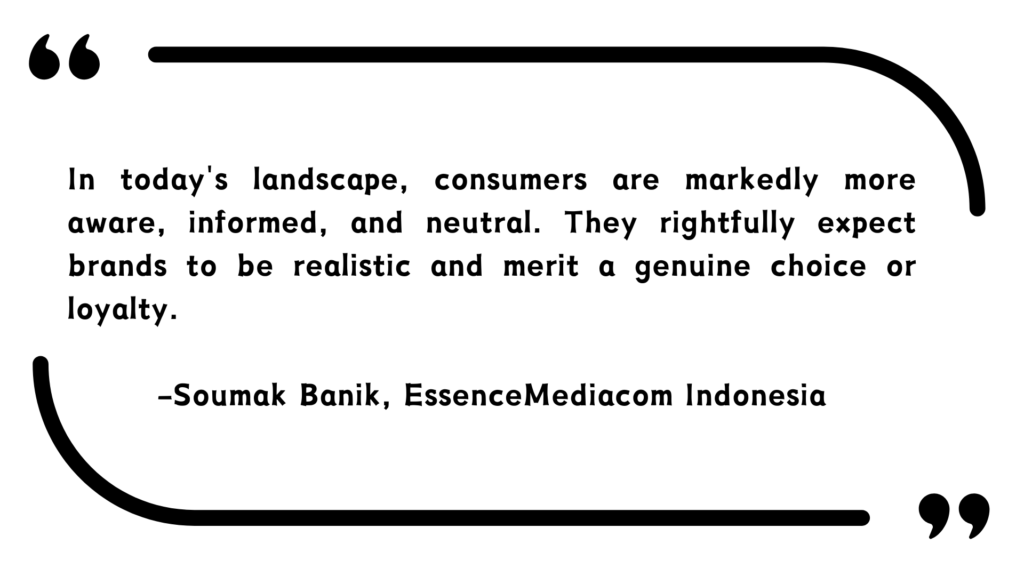
You have worked in different sectors, from FMCG, to Automobile to Luxury and Sports. How different or similar were the marketing and strategic plans you employed across these sectors? Has this experience helped you in your current role in any way?
It’s a privilege, and in fact, I feel fortunate to work across various sectors. The experience is an extensive learning journey. Honestly, the world of media and advertising is often filled with jargon. However, every brand, spanning FMCG to luxury to sports, shares a singular objective – driving growth. While some prioritize volume, others emphasize value. What unites brands is the pursuit of Lifetime Consumer Value (LCV). This objective stands as the ultimate milestone, whether it’s in strategy, marketing, communication, media campaigns, or go-to-market strategies.
Once the consumer pathway is meticulously mapped and defined, the focus shifts to effectiveness and efficiency, driving return on investment (ROI). While media choices may vary, encompassing different platforms and utilizing AI for creativity and propelling social commerce, the overarching purpose remains constant – drive growth.
Today, brands are rushing to advertise their products and services in metaverse in order to attract and engage their audiences better. What is the future of this trend in your opinion?
The key to attracting consumers to a brand has always been the platform for creative contextuality. The Metaverse stands out as an extraordinary effort in this direction, offering a dedicated space for Lifestyle, Luxury, Beauty, and Experiential brands. Leading the race are global brands such as Nike, Coke, H&M, LV, Gucci, Burberry, Mars, Forever21, and more. What was once considered a trend or a prospect is now an undeniable reality. The imperative for brands is to act swiftly and immerse themselves in the world of Web3 Technology.
Social media is now accessible to everyone thanks to technological advancements and smartphones. In-stream ads are now used by brands to customize their adverts based on audience. Could you tell us how EssenceMediacom has done this?
Programmatic Media and Dynamic Creative & Content Optimization (DCCO) have reached their pinnacle when it comes to audience targeting and media optimization. Innovative ad formats leveraging technology, ranging from face recognition to AR/VR, are already gaining prominence, with brands actively advocating for their adoption.
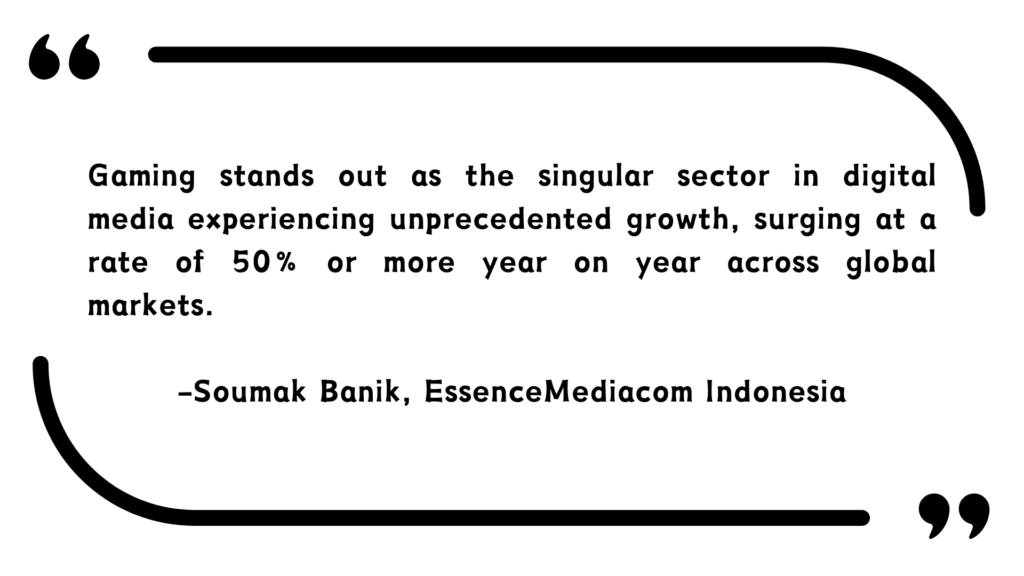
One target market that is growing at a rapid pace is the gaming industry. What are your insights about how brands should leverage these audiences to reach their intended audience?
Gaming stands out as the singular sector in digital media experiencing unprecedented growth, surging at a rate of 50% or more year on year across global markets. The evolution of gaming has been nothing short of remarkable, transitioning from a single-window format to now embracing experiential formats. It has traversed the spectrum from niche engagement to reaching a wider audience, ultimately becoming an experiential powerhouse. Notably, content is now navigating its path through gaming, as seen with Netflix launching Money Heist in the gaming realm.
While audience targeting predominantly takes a programmatic approach, brands must now pivot towards enhancing in-game experiences, with creativity playing a pivotal role. The era of banner ads and promotional QR codes in gaming advertising has passed. Experiential marketing in gaming has become imperative for brands to stay ahead in the game.
Can you share some examples of a successful campaign you carried out and the strategic planning that went behind it?
My all-time favourite, and it will always be, is the Vodafone India launch of the Zoozoo campaign in 2009. The campaign featured 44 different creatives addressing 45 different products/services of Vodafone. Remarkably, these 44 creatives were launched in 45 days – unveiling one new creative every day, culminating with the simultaneous release of all 45 creatives on the last day! This extensive campaign spanned 36 newspapers, 104 TV stations, 38 radio stations, all digital platforms, 1000+ OOH placements, and even made its mark in sports during IPL 2. Merchandising extended across 3000 Vodafone stores and apparel retailers.
It’s been more than 14 years, and yet Vodafone continues to incorporate Zoozoo in some of its campaigns in India. Such is the enduring recall and stature created by the Zoozoo campaign.
If given a chance to visit either the past, present or future, which one would you choose and why?
As always, the Present. It’s the best time ever.
Lego and Fortnite Announce Ground-Breaking Gaming Partnership
Lego and Epic Games have finally revealed the design of their kid-friendly metaverse as 2023 draws to a close. Fortnite and Lego have announced a ground-breaking partnership that promises to transform the battle royale gaming genre. The Fortnite Lego edition has been in development for a full 18 months. It is being marketed as a multiplayer “survival crafting game.” When it launches on December 7, it will broaden the Fortnite universe. It will serve as a fun and secure online playground for kids and their families. Every gaming console that supports Fortnite will have the game available. The Danish brick manufacturer is moving further into the digital sphere with this partnership. The move comes just months after it introduced “Lego Insiders,” an online loyalty program, in August.
Lego – Fortnite Metaverse Gaming Partnership
With the partnership, players can now create unique Lego islands every time they play the game. This is thanks to a randomly generated terrain system that was inspired by Minecraft. The power of the Unreal Engine is what makes this cutting-edge feature possible. It is a powerful game development platform that has created a comprehensive “Brick Database” especially for Lego. The partnership demonstrates Epic Games’ dedication to broadening its game selection and drawing in players of all ages, as does the inclusion of other features like Rocket Racing and Fortnite Festival. These advancements demonstrate the company’s commitment to developing game environments that are kid-friendly and guaranteeing young players’ safety when they are playing online.
Building audience loyalty
Lego’s partnership with the game has the potential to significantly expand its viewership. Lego could potentially reach a vast audience through Lego Fortnite, as evidenced by Fortnite’s 400 million registered users and 80 million active players monthly. Using digital programs, Lego has been cultivating audience loyalty for the past 18 months. Additionally, it has been carving out a more significant place in people’s lives. It is presenting itself as more than just a toy company and encouraging play that not only helps kids learn life skills but also enhances mental health.
Read More: Indian Gaming Firms are Eyeing the Brazilian Market. Explore Why!
Epic Games’ commitment to youth friendly gaming entertainment
Lego Fortnite is a significant step for Epic Games in drawing in younger players while still keeping the game kid-friendly. Epic Games has taken major steps to address these issues, even though the FTC had previously fined the company $520 million for concerns regarding in-game purchases and young players’ safety online. For players under the age of 13, these procedures involve the implementation of “cabined accounts,” which have particular limitations and security precautions. With an E10+ rating, Lego Fortnite is intended for children 10 years of age and older. Some video games in this genre may contain language or violent content that isn’t suitable for younger players.
hey, it’s the Sphere from Fortnite!!@spherevegas pic.twitter.com/2rMQAS0uAH
— Fortnite (@FortniteGame) December 3, 2023
Creating new worlds
All age groups will be able to enjoy an immersive digital experience thanks to this collaboration. It gives users the ability to create and share their own worlds with other players by allowing them to add particular conditions and features to their Lego islands. By enabling players to explore and update each other’s worlds over time, this shared experience fosters a sense of evolution and growth within the game’s universe. Lego has been working to go beyond its reputation as a physical toy brand and develop consumer loyalty through a variety of digital programs, like its August launch of the Lego Insider online loyalty program. This is in addition to investing over $1 billion in Epic Games for this metaverse experience.
Read More: Nazara Technologies announces Nazara Publishing, its game publishing arm
Strategic Partnership
The partnership is a strategic move for both businesses. Through this partnership, Lego, one of the most well-known toy brands in the world, will be able to reach a wider audience and capitalize on the growing popularity of the battle royale genre. Working with Lego gives Fortnite’s game a distinct depth that enables them to give players an interesting experience.
Epic wants to become more popular among younger gamers, but it faces competition from titles like Roblox and Minecraft. This objective is furthered by their collaboration with Lego, a brand well-known for its cooperative building experiences, which gives kids a chance to engage in imaginative play within the Fortnite world.
Dress for adventure with new LEGO Styles of your favorite Fortnite outfits!
Check them out in your Fortnite in-game Locker and the Item Shop now. Learn more: https://t.co/gMabemu810 pic.twitter.com/Cz97s2vJWD
— LEGO (@LEGO_Group) December 3, 2023
Upcoming Game release
The Danish company’s brand value increased by 10% in the past year to $13.069 billion. It is presently ranks 59th out of the top 100 global brands according to Interbrand‘s Best Global Brands research for 2024. Though the game’s release is only a few days away, not much is known about what to anticipate from the intellectual property. The only other fact is that players will be able to explore open worlds that blend gameplay elements familiar to fans of both Fortnite and Lego.
In summary, the partnership between Fortnite and Lego represents an exciting advancement in the gaming sector. It unites two well-known brands and brings cutting-edge gameplay features that have the potential to completely transform the battle royale genre. Players can anticipate building their own Lego-based worlds. Furthermore, they can share them with the world when the game launches in early 2024.
Read More: Etisalat and DCT- Abu Dhabi Partner to Revolutionize Gaming in MENA
Meta’s Horizon Worlds Expand to Mobile & Web Via Closed Beta Test
Despite previous reports claiming that less than 1,000 DAUs are using Meta’s $36 billion virtual metaverse platform, the company has released a closed beta test of Horizon Worlds for cellphones. The tech behemoth continues to work on bringing Horizon Worlds to mobile and the web. Similar to Rec Room, it allows users to design their own VR social games and experiences by placing and rearranging shapes using controllers. In order to create fluid functionality, it also offers a visual coding system.
Joining a queue for the closed beta test will give people another entry point into Meta’s virtual reality social setting. Meta anticipates that soon users will interact with their avatars in a variety of brand-new ways for a growing number of activities. It will welcome them into the larger metaverse experience and promote more VR adoption. The firm explained on the registration site that “more worlds are coming soon,” adding that “we are slowly rolling out worlds to mobile and web users as we ensure a great experience on mobile and web.” The firm’s virtual reality world, named Super Rumble, will soon be available on both mobile and web, it added.
Read More: Meta Adopts Consent Policy for Targeted Ads Data in Europe
Horizon Worlds on Mobile and Web
More people will be able to interact in Meta’s cutting-edge digital world thanks to the release of Horizon Worlds on mobile. It is anticipated that it will serve as the starting point for advanced social interaction. It will work like smartphone gaming apps, allowing users to move their avatar around the screen and communicate with other VR players. Although the lack of legs in the VR avatars continues to cause players to despair, Meta is still ironing out some of the presentational quirks.
Horizon Worlds will be accessible on Android devices via the current Meta Quest app. However iPhone users can only utilize the web-based version. This is probably because of Apple’s policy prohibiting apps from serving as games.
A look at Meta Horizon Worlds Mobile (running on Pixel 6a) pic.twitter.com/c4eJHJJG7o
— Luna (@Lunayian) August 25, 2023
Read More: Advertise Your Brand in the Metaverse: The Future of Digital Advertising
Super Rumble – the only accessible game
Super Rumble is the debut arena-style shooter game to be made available on mobile devices by Meta’s first-party company Ouro Interactive. Additionally, it is the only Horizon World currently using TypeScript, 3D asset imports, and the platform’s anticipated next generation creator tools.
Meta on bringing games to mobile and the web
Mobile and online development for Meta’s virtual reality game platform is still in its infancy. They are also aiming to make more worlds accessible. As they keep testing the experience, Meta clarifies that not all content will be accessible to everyone. Meta will have a better chance of growing Horizon Worlds’ user base by bringing problematic apps to mobile and online devices. Additionally, it will have a chance to achieve its long-term objectives of increased metaverse development and broad VR acceptance.
Meta wants to tap into how the next cohort of consumers are used to conducting their regular social contacts through mobile connections in a game-like environment. Nowadays, kids don’t ride bicycles to a nearby park to meet up like they used to. Instead, they now connect with their buddies mostly online in game environments like Fortnite, Roblox, and Minecraft. According to Meta, the next gen will be eager to broaden such interactions into a wider range of activities. Consumers may eventually transition to bigger settings and immersive VR experiences thanks to the Horizon Worlds mobile experience.
Advancing to the next phase
Recent media attention has focused on Meta’s planned release of their Quest 3 VR headset. It is scheduled to go on sale this fall. Meta is attempting to attract curious mobile users and VR players. It is releasing the new generation headset concurrently with the Horizon smartphone application. It is a vital step towards promoting the metaverse. The metaverse may still be on the horizon even though it hasn’t yet attracted the attention of key adopters. Another bridge leading to the next level is this one.
Read More: Lemma and Maxamtech partner to offer real-world DOOH clients Metaverse Billboards
Publicis Groupe’s Prashant Nandan Unveils Strategies for Connected TV Trends
Prashant Nandan, Senior Vice President of APEX at Publicis Groupe, is an experienced leader with over 15 years in digital marketing and advertising. With a deep understanding of go-to-market strategies, emerging media, and data-driven solutions, he unlocks business potential in the digital landscape. He is a visionary leader driving impactful results with proficiency in client servicing, media planning, programmatic, and more.
In this exclusive and captivating interview, he discusses effective strategies for Connected TV, transparency and Ad fraud, adapting to market dynamics, and embracing the Metaverse with AI.
Can you tell us about your journey and experience in creating go-to-market strategies across various digital channels?
My journey has taken me across mountains and oceans, through trials and triumphs, shaping me into a dreamer, a doer, and a believer in the power of determination. The digital world can be overwhelming, so I help connect businesses to digital ideas. My job spans the core areas of intelligence, investment, partnership, and innovation strategies for digital agencies and clients.
Creating go-to-market strategies: –
Each brand and market is unique, so it’s important to tailor our go-to-market strategy based on specific business goals, target audience, and industry dynamics. We regularly evaluate and refine our strategy to ensure it aligns with the brand’s evolving needs and market conditions. We help brands craft compelling and consistent messaging that resonates with the target audience and further tailor the messaging to each channel’s unique characteristics while maintaining a cohesive brand voice and identity. Adapting to changing market dynamics, we stay agile and capitalize on emerging opportunities. We are always open to experimenting with new channels or tactics based on data-driven insights and feedback from the target audience.
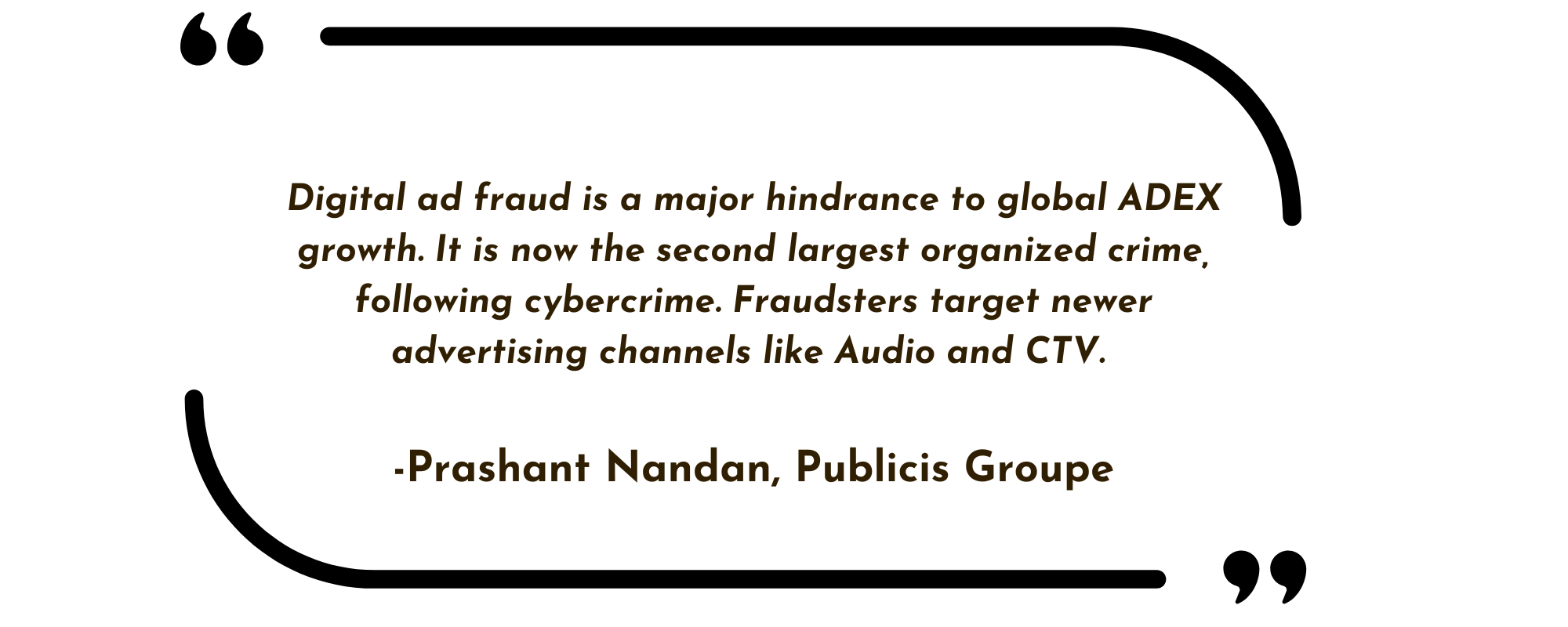
How do you determine the most effective mix of digital channels for a particular client or campaign?
Determining the most effective mix of digital channels for a particular campaign or client requires a data-driven approach. Here are some steps to consider:
- Clearly articulate the specific goals and objectives of the campaign. Whether it’s brand awareness, lead generation, sales conversion. Having a clear understanding of what brands want to achieve, will guide our channel selection.
- Develop a deep understanding of your target audience’s demographics, behaviours, preferences, and digital habits via different planning tools & primary/secondary research.
- Map out the customer journey from awareness to conversion. Identify touchpoints where our target audience interacts with digital channels throughout their decision-making process. Select channels that can effectively reach and engage our audience at each stage of the journey, ensuring a cohesive and seamless experience.
- Assess the strengths and capabilities of different digital channels. Consider factors such as audience reach, targeting capabilities, ad formats, pricing models, and performance metrics to evaluate how well each channel aligns with our campaign goals.
- Review past campaign data, industry benchmarks, and case studies to understand the performance of different digital channels in similar campaigns or industries.
- Manage the campaign budget and allocate resources based on the potential ROI of each channel. Evaluate the cost-effectiveness of channels by comparing factors such as CAC (Cost per customer acquisition), Cost per lead (CPL), and conversion rates. This analysis will help us optimize our budget allocation and prioritize channels that deliver the best return on investment(ROI).
- Implement robust brand safety, ad fraud, tracking, and analytics systems to monitor the performance of each channel.
How is your experience working with regional and global markets, and how do you adapt your strategies to different cultural contexts and market dynamics?
Working with different regional and global teams has given me exposure to diverse customer preferences, behaviors, and market trends. This experience provides valuable insights and learning opportunities, enabling me to refine our digital products, services, and marketing strategies. Engaging with different cultural contexts and market dynamics often fosters innovation and creativity, leading me to develop unique solutions and approaches that cater to specific client needs. I have learned to be adaptable and responsive to changing market dynamics, continuously monitoring client/internal stakeholder feedback, market trends, and the competitive landscape. This allows for timely adjustments to strategies, pricing, or product offerings to stay relevant and competitive.
What measures do you take to ensure that the programmatic campaigns are transparent and free from ad fraud?
Digital ad fraud is a major hindrance to global ADEX growth. It is now the second largest organized crime, following cybercrime. Fraudsters target newer advertising channels like Audio and CTV. The recent ICEBUCKET operation, exposed by White Ops, revealed a significant threat in the CTV space. By spoofing IP addresses of 2 million devices across 30+ countries, fraudsters made marketers unknowingly purchase CTV ad space that was served to bots. Additionally, DoubleVerify uncovered “BeatSting“, the first large-scale ad impression fraud scheme in digital audio advertising.
To combat ad fraud, all stakeholders, including advertisers, supply-side partners, device manufacturers, and server-side ad insertion, must be vigilant and implement solutions that address app fraud, device spoofing, Server-side Ad Insertion (SSAI) manipulation, non-stop ads, and malware-hijacked CTV devices. Here are tactics that advertisers can put in place to protect themselves.
- Bring a third-party vendor like Double Verify, Integral Ad Science, White Ops, Moat etc that detects fraud pre-bid level for protection against Digital ad fraud.
- Monitoring the location and device for all ads interaction & stick to premium inventory.
- All parties buying & selling video inventory should follow IAB guidelines, for CTV/OTT known as IFA ( Identifier for Advertising (IFA) series).
- Build a clean supply chain and remove the middlemen selling ad inventories.
- For Brand safety, advertisers should use keyword blocking, category blocks like sensitive, and unprofessional content, and work with the third party at the pre-bid level for brand safety.
- Pre-Bid filter of brand safety for checking App star ratings, age ratings, and store categories.
- In brand safety “Add blocking” should be available on all ad inventories to prevent ads from serving next to risky content.
- Give preference to programmatic inventory enabled with app-ads.txt.
- Avoid audience extension and long-tail “no-name” apps unless 100% transparent tracking and favorable terms and conditions are in place.
- The stringent clause at IO (Insertion order) for all level report transparency.
Can you explain the key differences between Connected TV and traditional TV advertising, and how these differences impact your go-to-market strategies?
The TV and digital industry use specific terms, like traditional/linear TV, OTT, and CTV. Here’s how to differentiate them.
| Linear TV or Traditional TV refers to the traditional method of content delivery where TV programs are only available at scheduled times. These programs are delivered by broadcast, cable, or satellite.
|
OTT refers to the delivery of on-demand video content through the internet by companies like YouTube, Netflix, Prime Video, and others. It allows viewers to watch their favorite shows anytime, bypassing traditional TV platforms such as cable and satellite. | CTV, or Connected TV, is a new viewing device that combines the advantages of traditional TV (shared viewing on a large screen) with digital streaming platforms (on-demand access to diverse content delivered via the internet).
|
Connected TV (CTV) devices like smart TVs, gaming consoles, and streaming sticks (such as Chromecast, Apple TV, Roku) enable users to access and display two types of content on a large screen:
1) Internet-delivered programming from broadcast and cable TV networks.
2) Digital-only streaming content from platforms like YouTube, Netflix, Prime Video, and Hotstar.
Go-to-Market Strategy for CTV: To achieve incremental reach, it is beneficial to combine Linear TV and CTV strategies. Linear TV maintains a strong reach among the TV-viewing population in India, and the hybrid viewing pattern is expected to persist for years. By merging the teams responsible for linear and connected TV buying, the goal of reaching viewers on any screen can be effectively accomplished.
Here are a few ways to do it:
- First, to drive incremental reach use Automatic Content Recognition (ACR) data to segment households that were exposed to the linear TV campaign and those who had not been exposed.
- Next, target non-exposed households with ads on CTV.
- Balance your frequency by targeting light TV viewers and cord-cutters more heavily than heavy TV viewers.
- ACR can identify households watching the competition ads and target them on different digital devices.
- Combine second screen targeting (Second screening” is a term for when viewers are watching television but are also using a secondary electronic device during that time) with your TV campaign.
- CTV ads are served programmatically so you can target audiences that have streamed content by genre, movies, TV series, actors, or directors.
Connecting linear and CTV ecosystems benefits advertisers with quality inventory, cross-screen audience reach, and effective measurement and attribution.
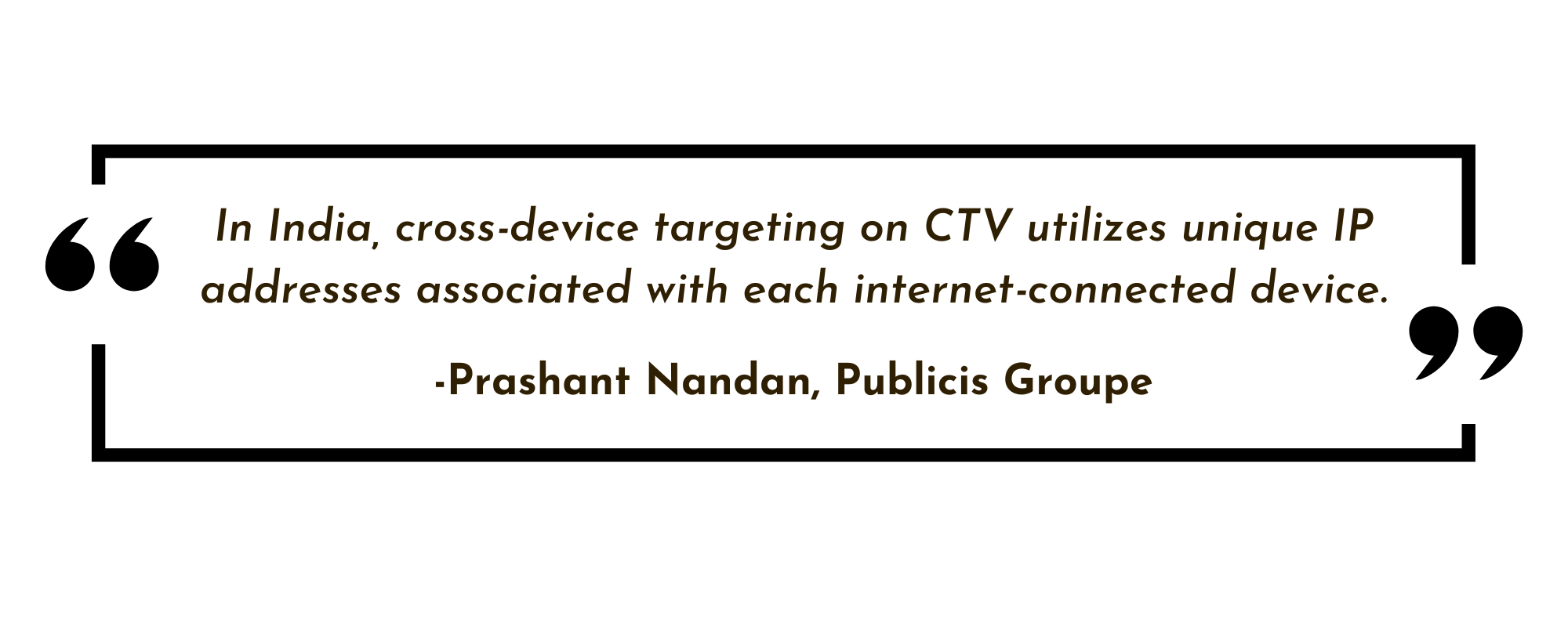
How do you manage cross-device targeting and attribution in your Connected TV?
In India, cross-device targeting on CTV utilizes unique IP addresses associated with each internet-connected device.
- Ad-tech companies employ diverse methods to identify IP addresses of devices accessing CTV content, which serve as unique identifiers for each device.
- Ad-tech companies collect and maintain databases of IP addresses associated with specific devices or households.
- Ad-tech companies utilize device graphs, which are databases or platforms that link multiple devices to the same individual or household. These graphs combine data points like IP addresses, cookies, device IDs, and other identifiers to create a comprehensive view of cross-device behavior. By analyzing shared IP addresses and Wi-Fi network connections, patterns and connections can be assessed to identify devices likely used by members of the same household.
- Once devices belonging to a household or individual are linked through IP address matching, brands can target specific ads to those devices across CTV platforms. Advertisers can leverage audience segmentation and targeting criteria, such as demographics, interests, and browsing behavior, to deliver relevant ads to the identified devices.
It’s important to note that IP address-based targeting for cross-device advertising has limitations. Dynamic IP addresses, shared networks, and privacy measures like virtual private networks (VPNs) can reduce the accuracy and precision of device-to-household mapping.
Measuring attribution on CTV : In this evolving stage, advertisers employ multiple approaches such as ad server reporting, incremental testing, panel surveys, and other data sources to refine measurement methodologies. These efforts aim to gain a comprehensive understanding of the attribution and effectiveness of CTV campaigns.
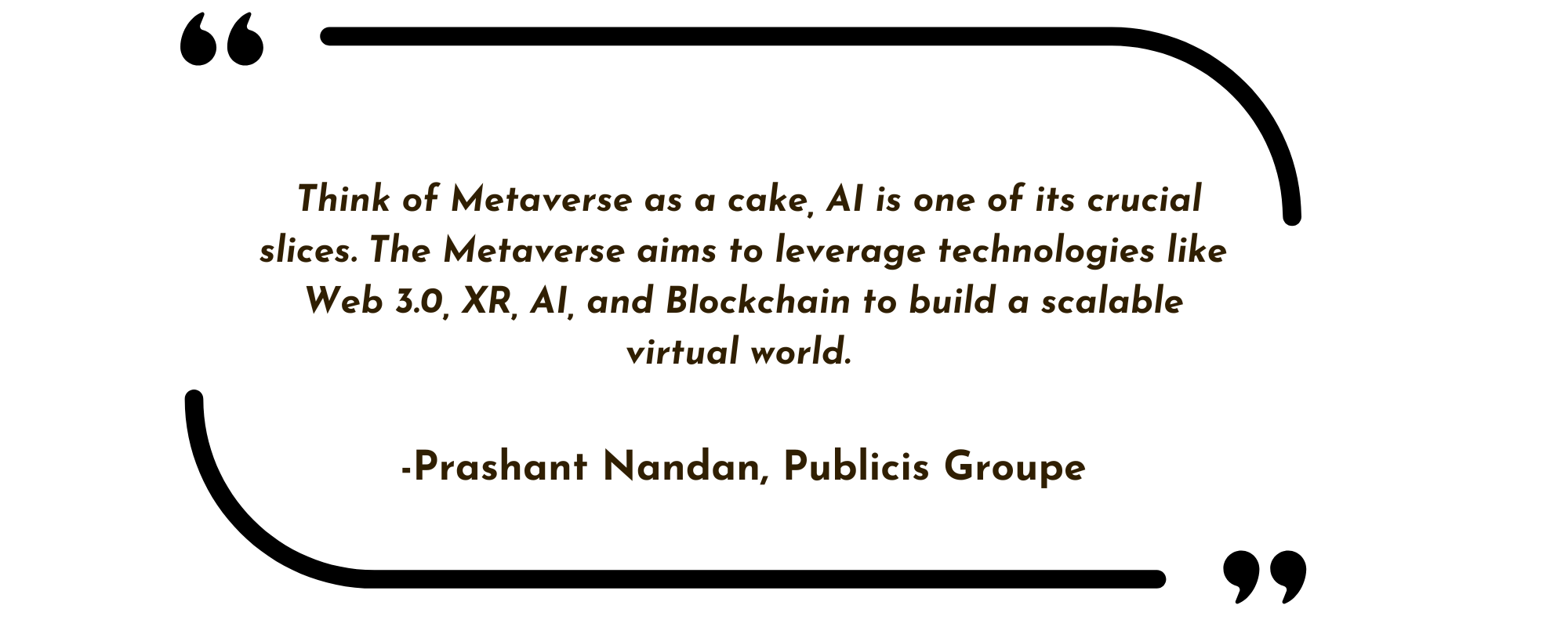
What are some key trends you see emerging in the Connected TV and how do you plan to capitalize on these trends in your strategies?
The cord-cutting audience is expected to grow. In the next 5 to 7 years, smart televisions are projected to become the norm in India, offering on-demand content, music streaming, video calling, and personalized recommendations. These TVs will also enable social interactions, co-watching, and content sharing. Additionally, smart TVs will embrace portability through cloud computing, allowing users to enjoy their favorite content anytime, anywhere.
In the future, TVs will go beyond traditional viewing, with OEMs adding services like gaming and health & fitness. Samsung, for example, has introduced a gaming hub on its smart TVs, allowing users to play games without a console or PC. Remote-controlled TVs will become outdated as voice-based and XR-controlled smart televisions gain prominence. While shopping directly on TV interfaces is still developing and limited to QR codes, tech platforms like Amazon and Google are experimenting with shoppable content ads.
CTV platforms are increasingly integrating with data management platforms (DMPs) and customer relationship management (CRM) systems, empowering advertisers to leverage first-party and third-party data for enhanced audience targeting and campaign effectiveness.
What is your perspective on the relationship between AI and the Metaverse? Do you believe AI is dominating or overshadowing the development of the Metaverse?
If we think of Metaverse as a cake, AI is one of its crucial slices. The Metaverse aims to leverage technologies like Web 3.0, XR, AI, and Blockchain to build a scalable virtual world. While AI has become a critical technology, predictive AI predates generative AI, utilizing statistical models, data analysis, and machine learning algorithms for future predictions. However, the Metaverse won’t achieve mainstream adoption overnight, as it faces challenges that need to be addressed. Concurrency and latency are foundational issues that must be solved.
Facebook, for instance, believes the Metaverse is at least 10 years away from entire operation due to these challenges. AI will play a facilitative role in the growth of the Metaverse, automating tasks such as creating and designing virtual environments, as well as aiding in content creation like 3D modeling and natural language processing.
Lemma and Maxamtech partner to offer real-world DOOH clients Metaverse Billboards
Lemma has partnered with Maxamtech to introduce metaverse billboards to real-world digital out-of-home (DOOH) clients, enabling brands to offer audiences a dual experience in the virtual and physical worlds. This virtual advertising resembles a brand’s real-world representation, giving advertisers the ability to redirect users to their website or landing page, thereby enhancing customer engagement. By leveraging this platform, brands can significantly increase their overall impact on their target audience.
The collaboration between Lemma and Maxamtech will assist global brands in creating an indelible brand impression on untapped audiences through the virtual billboards in the Metaverse, connecting the brand story seamlessly across both realms.
Billboard advertising in Metaverse
Billboard advertising in the Metaverse is currently cost-effective, and it presents a potentially lucrative opportunity to reach a new audience as the Metaverse continues to grow. By leveraging this technology, brands can establish a presence in the virtual world and make a lasting impression on a new and untapped audience.
Billboard ads are a great starting point for brands to explore Metaverse advertising. Brands can begin with billboards and later expand into other opportunities such as events, product placement, and more. This platform provides a unique opportunity for brands to establish a presence and explore the many advertising opportunities available in the Metaverse.
Interesting Read: Advertise Your Brand in the Metaverse: The Future of Digital Advertising
Win-Win partnership
Maxamtech is a significant player in the market, with a growing audience in the gaming and virtual worlds. Through its partnership with Lemma, the two companies will provide clients with strategic in-game placements, enhancing customer engagement by enabling advertisers to redirect users to their website or landing page.
This feature allows brands to leverage the growing popularity of virtual worlds and gaming to create targeted advertising campaigns and establish a presence in the Metaverse. By collaborating with Maxamtech, Lemma can deliver a powerful platform to its clients, enabling them to engage with a growing audience in virtual space.
And that’s what they said
Gulab Patil, Founder and CEO of Lemma, said,
Metaverse billboards can reach a global audience and help expand a brand’s reach and target new markets efficiently. Further, virtual billboards can show unique advertisements to each user based on their demographics, interests, and actions. Ad personalisation reduces waste and boosts the efficiency of advertising campaigns as a whole.
He continues,
Our decision to offer metaverse billboards to the clients will ensure that brands who aim to reinvent themselves to align with audiences in the Metaverse as new patterns of behaviour and consumption emerge will be able to do hassle-free through Lemma.
Xerxes Mullan, Founder of Maxamtech Digital Ventures said,
We are constantly looking for new and exciting ways to grow and monetise our gaming platform, and this partnership with Lemma presents a perfect opportunity to do so. We look forward to working with them to offer brands and advertisers innovative ways to reach audiences with engaging and cutting-edge new ad units.
Interesting Read: How Will Dubai’s Metaverse Sector Contribute To Its Economy By 2030?
Advertise Your Brand in the Metaverse: The Future of Digital Advertising
The world is expanding beyond the physical boundaries of humans. Metaverse is one such example! Metaverse is a virtual world that can be accessed using augmented reality and virtual reality headsets.
Facebook Introduced Metaverse to make social interaction realistic. Although events happen in virtual reality, they feel natural. It has opened numerous doors of opportunities for businesses across the world. Users are purchasing lands, and building real estate by creating their avatars. Therefore, it opened a doorway of opportunities for brands to advertise their products.
Metaverse has generated numerous possibilities. Brands are eager to grab this opportunity and explore futuristic ways to create an everlasting impact on their audiences in this new virtual universe. Thus, the time is opportune to get started and establish a milestone in the metaverse.
The concept of the metaverse is not new. It was first coined in the year 1992 in a science fiction novel “Snow Crash”. The term was used to describe a fictional or advanced universe. A virtual land filled with opportunities!
Since then, the word creates an image in the mind of readers painted with the world of a sci-fi movie. It created an image of new possibilities and advancement. As we proceed, we will discuss the area of possibilities and opportunities of advertising in the metaverse.
Guide to getting started with advertising in the Metaverse
Image credit: Twitter
We have learned that the metaverse is an augmented reality designed by humans to expand the horizon of their experiences. Virtual reality promises far more than what we can experience in our physical reality. Therefore, it will not be false to say that advertising will require additional efforts in the virtual world.
Metaverse is a promise! It is a leap in the future beyond imagination. Therefore, to make your brand worthy of advertising in the Meta-universe, brands must re-invent. They must re-think and re-evaluate their brand following the new reality. Advertisers must design their campaigns following their virtual audiences.
Metaverse has been evaluated to be a trillion-dollar market. No one can have it all! Thus, everyone will get a chance to sustain the audience by using the best creative minds in the market.
Factors to be considered before advertising in Metaverse

Image Credit: sensorium
Before we get started with our advertising endeavor in Metaworld, we must understand the area of opportunities. As every game has its own rules, so does metaverse. Here we are listing some key categories that one can try their hands on if they are planning to start their journey with advertising in Metaverse.
Expansible: Metaverse is a multi-million business due to the presence of millions of people on the platform. People are creating their avatars and coexisting in the metaverse.
Easy to access: The world is accessible to all without any boundaries. You can be of any age and ethnicity. You can belong to any region or background, metaverse will provide you with similar opportunities.

Image Credit: Mashable
Social hive: Metaverse is the key attraction for people. Everyone in the metaverse is trying to explore possibilities. Therefore, this could be the best time for brands to step in and establish themselves through fine-crafted advertising in the virtual universe.
Unique content: Users are using interactive and immersive content. It is helping to shape the virtual reality of the metaverse. Users are exploring the boundaries of the Metaverse and trying to achieve goals that they find unattainable in the physical world.
Patching the gap: Metaverse gives their users a real-world experience where they can interact with one another, explore products and enjoy the services. Therefore, this makes the metaverse a perfect place for advertising.
Understanding Metaverse:
Before we start advertising in the metaverse, it is crucial to understand the basics. These basics will help advertisers to portray their products effectively. The word Metaverse is a combination of “Meta” meaning beyond, and “Verse” meaning universe. It is often defined as the land of opportunities and origin. Using the virtual world as a platform to portray their products, brands will no longer be enslaved or will feel bounded. They will have maximum opportunity to sell their products to the consumers.
The possibilities in the metaverse are endless, and users can multitask. It gives the virtual world an edge over the physical world. For example, users can purchase from their favorite brands while attending concerts or dining at their favorite restaurants.
Here are some terms that advertisers should familiarize themselves with as they start advertising in the metaverse.

Image Credit: xGuru
Virtual Reality (VR): Virtual reality is a simulated reality created using a 3D technique. It is similar to a hologram. However, unlike a hologram, people can see their projected avatars and other avatars in a 360-degree virtual simulated environment. Using head-mounted devices (AR/VR) users can sense, feel, and get audio feedback. This experience is interactive and immersive.
The technology is still maturing, and we might get past the limitations of VR headsets in the future.
Augmented Reality (AR): AR is a technology that uses computer-generated imaging. These images are superimposed to achieve a single image. This image occupies physical space in the real world. To enhance the immersion, sound and visuals are added.
Mixed reality(MR): Using the technology of AR and VR, mixed reality is designed. Mixed reality lets users interact with artificial content in the real world. AR and VR are the components of mixed reality. These create a bridge between the real and digital worlds.

Image Credit: Zentao
Extended Reality (XR): Extended reality is a step forward. It is created by immersion in AR, VR and MR technologies. XR enhances the experiences through a bridge between human and machine interaction.
Image Credit: Indian Express
Avatars: The word is self-explanatory, and most of us have already seen the movie “Avatar”. The phenomenon is the same as it was in the movie. In the metaverse, one can create an avatar and experience virtual reality using these avatars.

Image Credit: Leeway Hertz
Blockchain: A method enabling digital security and storage of digital data. This data can be stored on a local server or over the cloud. The technology has been proven successful and empowers cryptocurrencies like Ethereum and Bitcoin. It has also proven to be helpful in the succession of NFTs in the metaverse.

Image Credit: IndiaTV
Cryptocurrency: Cryptocurrencies are virtual currencies. They are used for payments in the virtual world. These currencies are usually stored in digital wallets. To make the storage and transaction secure blockchain technology is used. Some common examples of cryptocurrencies are Ethereum, Bitcoin, etc.

Image Credit: LeewayHertz
Non-Fugible Tokens (NFTs): These are unique assets(digital) stored in blockchain. These represent real-life products/items such as art, music, and other collectible items. You will gain true ownership of these items in the digital world.
Trends Of Advertising In Metaverse
We have already understood the scope of opportunities and possibilities in the metaverse. However, it is crucial to understand the ways and trends that will help us to advertise in the virtual world. Metaverse is still at its inception. It will not be unjust to say that it is still a sampling, and calculating its true potential will not be justifiable. Therefore, in this evolving technology one must understand the ongoing traits and trends.

image Credit: Social Samosa
Virtual Influencers: We have already seen the power of influence marketing. Platforms like Tiktok, Instagram, Facebook, and Snapchat have already proven the possibilities and impact of influence marketing. Similarly, metaverse empowers brands to choose their favorite influencers and create a high-impacting campaign. These campaigns are not only effective but also cost-efficient. Dior, Valentino, and Calvin Klien are using influencers like Imma, Shudu, and Lil Miquela to advertise their products in the virtual universe. R3 a marketing consultancy has already emphasized the impact of influencer marketing in the metaverse. Therefore, it is a proven technique to establish your brand in the virtual universe using influencer advertising.
Events In Metaverse: We all understand the value of advertising at major events. Concerts, summits, Super Bowl, and sports events gather huge audiences. Therefore, placing your products or campaigning with a full-time advertisement help to create an impact on consumers.
Ariana Grande, Lil Nas, and Travis Scott’s concerts gathered millions of fans. Hence, creating huge revenues for the brands.
MetaCommerce: People love to follow trends not just in the physical world but also in the metaverse. Users are spending money to recreate their avatars. They are spending money to purchase all types of products, clothing, and accessories with the help of the in-app purchase. The in-game purchase market has already seen huge success. The in-game purchase market is already predicted to surpass the milestone of 74.4 billion USD.

Image Credit: Campaign Asia
Similarly, Metaverse is also seeing a high demand for in-app products that users are purchasing to recreate the value of their avatars. Metaverse is also monetizing the products using its economic currency used to exchange goods. The currency used is NFTs, and brands like Coca-Cola, Tommy Hilfiger, Wendy’s, Samsung, and Gucci are offering their NFTs in the virtual world. Users can also the NFTs are non-fungible tokens supporting virtual economies. They can protect their ownership of products using NFTs.
Direct Advertising in Metaverse: One of the oldest and most eye-catching ways of advertising is digital advertising. We all can agree that this old and proven method is not going to vanish any time soon. Virtual platforms are already providing virtual billboards, and brands like Samsung, Coca-Cola, Adidas, and Balenciaga are already trying to grab all the attention by capturing the maximum presence that they can get their hands on.

Image Credit: Supply chain brain
Wrap Up
- Metaverse is at its primitive stage, and several developments are going to happen with time. People are still trying to figure out the most suitable ways to gain the best out of it. Therefore, creating a footprint in the metaverse is easy at this stage of its evolution.
- Continuous study of the latest trends and areas of possibility will prove to be beneficial in the long run perspective.
- The possibilities are endless! As there are no barriers to creativity one can explore multiple dimensions of opportunities and enhance the user experience by providing them with a hassle-free journey through their products and services.
How Will Dubai’s Metaverse Sector Contribute To Its Economy By 2030?
The Dubai Ruler Sheikh Mohammed bin Rashid Al Maktoum announced earlier this month that Dubai’s metaverse sector will contribute $4 billion to the emirate’s economy by 2030.
Dubai Crown Prince Sheikh Hamdan bin Mohammed and Sheikh Maktoum bin Mohammed, the Deputy Ruler of Dubai have now directed the formation of a task force to track the latest developments in the digital economy, including technology and metaverse trends. As quoted by Arabian Marketer, Sheikh Hamdan said,
The directives of Sheikh Mohammed bin Rashid to form a higher committee to supervise Dubai’s future technological developments reflect the importance of facing the future with an open mind. The move will help us fully understand reality and explore unique ideas that will shape a brighter future for Dubai and the UAE, maximising future business opportunities.
.@HamdanMohammed, @MaktoumMohammed review vital technology trends in the metaverse and issued directives to form a task force to track the latest developments in the digital economy. #Dubai https://t.co/oY819Rs5MU pic.twitter.com/lVtk79uYLT
— Dubai Media Office (@DXBMediaOffice) May 19, 2022
But what exactly is Metaverse? Metaverse users interact with other users in computer-generated environments such as shops, learning environments, and meeting rooms, among other things, in three-dimensional, hyper-realistic virtual rooms. It combines elements of social media, augmented reality, virtual reality, video games, and other advanced technologies.
Interesting Read: Admix And JGroup Partner To Bring In-Play Advertising To MENA Brands
The Dubai Metaverse Strategy
Dubai is capable of attracting and retaining the largest technology companies in the world. Hence, Dubai Metaverse Strategy’s higher committee plans to utilize metaverse technology. This will enhance resident surgeons’ performance by 230%.and raise the output of engineers by 30%. It also aims to raise the metaverse’s contribution to one per cent of the emirate’s GDP.
During the meeting with Sheikh Hamdan and Sheikh Maktoum, Omar bin Sultan Al Olama, who is the UAE Minister of State for Artificial Intelligence, Digital Economy, and Teleworking Applications and chairman of the Dubai Chamber of Digital Economy, outlined how Dubai stands to benefit from the metaverse in a way that enables it to generate business opportunities beyond its physical borders.
Further, it is implementing activities and projects that will increase its web presence. The higher committee is actively examining opportunities and challenges. It is trying to qualify human capital so that it can excel in the virtual environment.
Moreover, it’s constantly working to establish a legal framework that addresses the needs of all sectors in the future. Forecasts indicate that business revenues from the metaverse will increase from $180 billion to $400 billion by 2025.
Interesting Read: Bloomberg Media Studios Unveils First Creative Hub In The UAE
Dubai’s metaverse regulatory authorities
Dubai’s Virtual Assets Regulatory Authority (VARA) established its Metaverse HQ earlier this month, making it the first regulator with a presence in the emerging digital space.
Dubai plans to create a prototype of a decentralized regulator model by expanding VARA’s resources beyond borders. Moreover, it intends to make it readily accessible to government and industry leaders, other authorities, and virtual asset providers to shape the future of the digital economy.
VARA’s MetaHQ will utilize The Sandbox platform, an Ethereum blockchain-based application that allows users to create, sell and purchase digital assets.
Interesting Read: OSN Rebrands Its Streaming Service With OSN+









